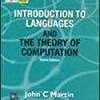No products in the cart.
Return To Shop
Menu
Categories
- Physics Books
- UPTU & AKTU Books
- Dictionaries / Language Learning
- Yoga
- Beauty and Fitness
- Text and Reference Books
- Biology Books
- Computer Science Books
- Personality Development
- Meditation
- Ayurveda / Homeopathy / Herbal Cure
- Used or Second Hand Books
- Accounting
- Children Books
- Family and Relationships
- Health & Fitness
- Crafts and Hobbies
- Mechanical Engineering Books
- Biotechnology Books
- Delhi University Books
- General
- Parenting
- Games & Quizzes
- Electrical Engineering Books
- Food Technology
- Management Books
- Biographies
- Nutrition
- Jokes - Humour
- Mathematics Books
- Hindi Books
- Best Deals: Top Selling Books
- Academic Book
- Law Books
- Class-11th Books
- Chemistry Books
- New Arrivals
- Electronics Telecom
- Class- 9th books
- Civil Engineering Books
- Medical Books
- School Books
- Environmental Engineering Books
- Electronics Communication Books
- Class- 10th class
- Free Online e-Books
- Class 12 th Books
- NCERT
- Motivational
- English Novel
- Astrology / Palmistry / Vastu / Hypnotism etc
- Competitive Examinations
- Engineering Books
- Electrical and Electronics Engineering (EEE)
- Encyclopedia
- Gift Items
- Cookery
- Economics
- Amity University ASET Books
- Alternative Therapy
- Spiritual Books
- Stress Management
Geographic Information Systems By Kang-Tsung Chang | Buy to save >
₹1,999.00 Original price was: ₹1,999.00.₹685.00Current price is: ₹685.00.
Categories: Computer Science Books, Used or Second Hand Books
Backorder means you can still order but the product's availability might have to be double checked with warehouses as there are other pending orders. We will ship it to you subsequently.
Out of stock
visible
Geographic Information Systems by Kang-Tsung Chang
is a detailed guide that covers the essential concepts and applications of GIS. The book introduces GIS technology and spatial data analysis methods used in various fields such as urban planning, environmental studies, and disaster management. The author provides a comprehensive overview of GIS components, including hardware, software, and data management.
Through case studies, Geographic Information Systems by Kang-Tsung Chang showcases practical applications of GIS in solving real-world problems. The book covers geospatial data models, remote sensing, spatial analysis, and data acquisition techniques. The author also discusses the use of GIS in industries like transportation, agriculture, and public health.
Chang’s accessible writing style makes GIS concepts easier to understand, and the book includes exercises to reinforce learning. With detailed illustrations and clear explanations, Geographic Information Systems serves as an ideal resource for both students and professionals. The practical examples and exercises help readers apply their knowledge to real-world problems.
The book also explores new trends in GIS, such as mobile and cloud-based GIS, ensuring readers are up-to-date with the latest technology. Overall, Geographic Information Systems by Kang-Tsung Chang provides readers with the foundational knowledge needed to understand GIS and its potential applications in various industries. Whether you are a beginner or an experienced professional, this book offers valuable insights into the world of geographic data analysis.
Related products
Organic Chemistry For Competition For IIT – JEE By O P Tandon
Computer Based Numerical Statistical Techniques By Manish Goyal
INTRODUCTION TO LANGUAGES AND ...
₹670.00 Original price was: ₹670.00.₹420.00Current price is: ₹420.00.


Enterprise Resource Planning B...
₹695.00 Original price was: ₹695.00.₹273.00Current price is: ₹273.00.
More
More




